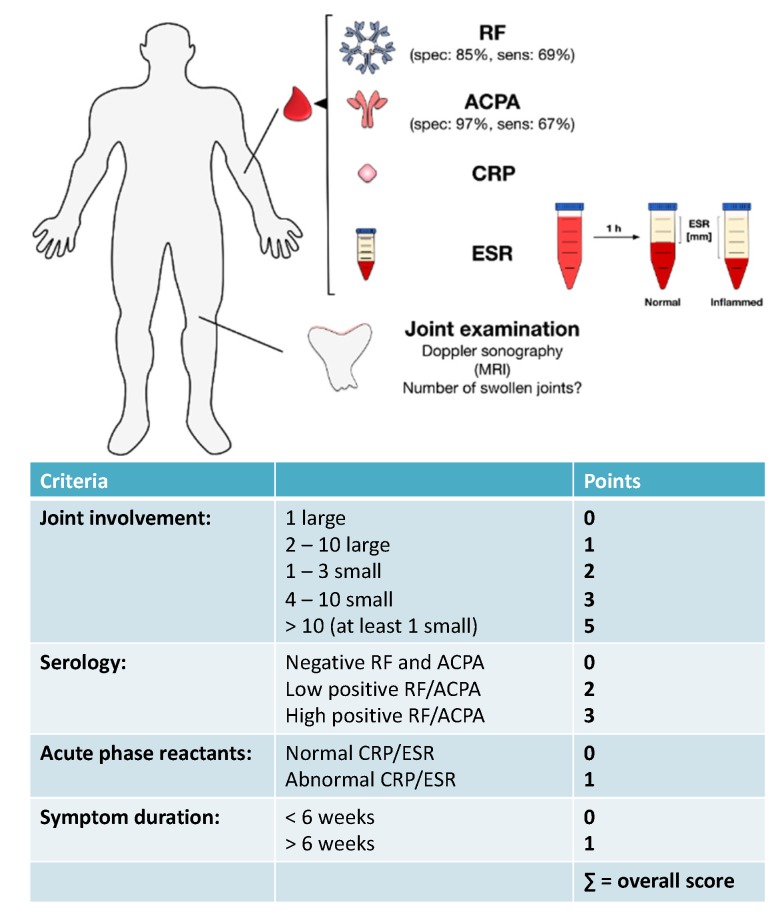Figure 3.
Clinical parameters frequently used in the diagnosis of RA and their quantification using the 2010 ACR-EULAR (American College of Rheumatology-European League against Rheumatism) classification criteria. Clinical diagnosis (left) of RA relies on joint examination (mainly via sonography, but also by magnetic resonance imaging (MRI)), and the serological determination of RA-specific autoantibodies (Rehmatoid factor (RF) and ACPAs) and detection of elevated levels of C-reactive protein (CRP) and an increased erythrocyte sedimentation rate (ESR). The 2010 ACR-EULAR RA classification criteria (right). Scoring parameters are number and size of the involved joints, the presence and concentration of RA-specific ACPAs and RF autoantibodies, presence of abnormal levels of CRP and increased ESR, and overall duration of disease symptoms. According to the 2010 ACR-EULAR RA classification criteria a RA diagnosis is made if the overall score is greater than six and other causes for synovitis (see above) can be excluded.

